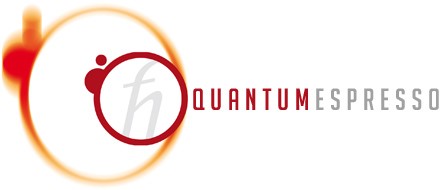|
Issue 57
Stay informed about what's happening on nanoHUB! Check out our featured resources, ongoing webinar series and more, below.
Back to School Webinar Series
Our Back to School Series continues in October with live webinars on how faculty use nanoHUB tools in their classes, with a focus on DFT tools in nanoHUB. You can follow along using the tools and there will be time for Q&A during each session.
The nanoHUB team is happy to provide assistance to faculty who are interested in incorporating nanoHUB simulations in their courses. Please reach out via our Contact Us form.
Density Functional Theory: Introduction and Applications

In this webinar, Prof. André Schleife, from the University of Illinois at Urbana-Champaign, will briefly outline the fundamentals of DFT, and demonstrate how to use Quantum Espresso in nanoHUB to compute electronic structure, electronic densities of state, total energies, and bulk modulus for example materials.
Date and time
Wednesday, October 5, 2022 from 1:30 - 2:45 PM EDT
A condensed matter physics class and a Course-based Undergraduate Research Experience (CURE) with the MIT Atomic-Scale Modeling Toolkit
Prof. David Strubbe will discuss how he has been using the MIT Atomic-Scale Modeling Toolkit as a part of his undergraduate and graduate class on condensed matter physics at UC Merced.
Date and time
Wednesday, October 12, 2022 from 12:00 - 1:00 PM EDT
Interactive modeling of materials with density functional theory using the Quantum ESPRESSO interface within the MIT Atomic Scale Modeling Toolkit
As a follow-up to Prof. David Strubbe's webinar, Dr. Enrique Guerrero will focus in more detail on the Quantum ESPRESSO module within the MIT Atomic Scale Modeling Toolkit with interactive examples.
Date and time
Wednesday, October 26, 2022 from 12:00 - 1:00 PM EDT
New Resources on nanoHUB
Virtual Tissue Computer Simulation of Development, Homeostasis and Disease using CompuCell3D
In this presentation, Dr. James Glazier, PI of the nanoBIO node at Indiana University, and Trinity Chung, an undergraduate researcher from Pasadena City College, discuss computational biology, including a virtual tissue computer simulation of development, homeostasis and disease using the CompuCell3D tool. This work was done as part of the Micro Nano Technology Collaborative Undergraduate Research Network (MNT-CURN) which introduces community college students to research. Applications to the 2022-23 MNT-CURN program are open now. This seminar is part of the MNT- CURN Seminar Series.
nanoHUB Tips and Tricks
Recent Updates to Jupyter Notebook Tools in nanoHUB
You may have noticed a few updates to Jupyter Notebook tool resources within nanoHUB. The changes are strictly informative, and will help you choose which tool to use when beginning a new project. Older Jupyter Notebook tools will present a pop-up window that lets you know that a newer tool is available. We encourage you to use the latest version for new development work. You can still access older notebook tools at the same links as before, and any bookmarks you have saved will direct to the correct application. If you come across a deprecated Jupyter Notebook tool, that means there is a duplicate, and a link to another tool with the same functionality is provided.
Some of the updates are as follows:
- Each tool has an updated title that reflects its publication date, as shown in the image below.
- Each “About” page now includes information about the languages available in that version and also provides a list of commands that you can run in code cells to return up-to-date lists of the environments and packages currently installed.
- Links to popular Jupyter Notebook apps for machine learning are provided.
Do you have a suggestion or nanoHUB success story you'd like to share? Use our Contact Us form and you may see your submission in a future newsletter!
|




